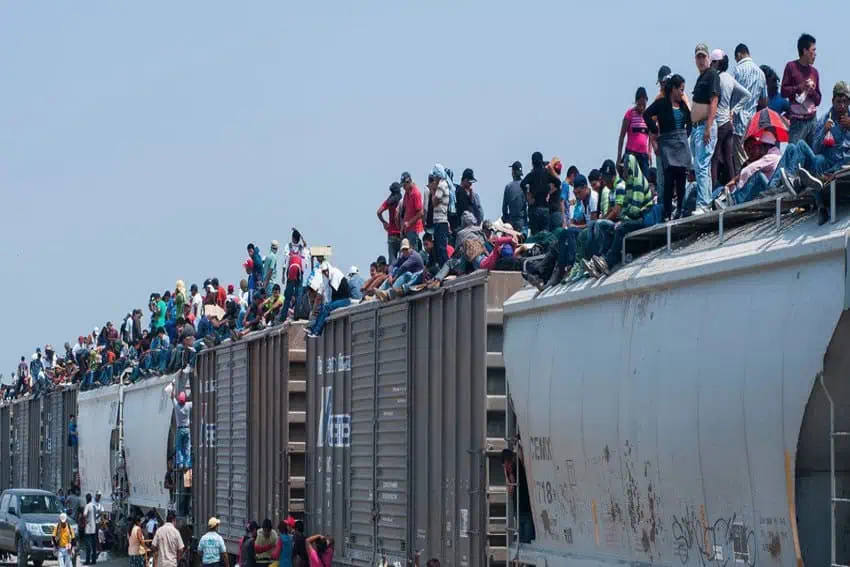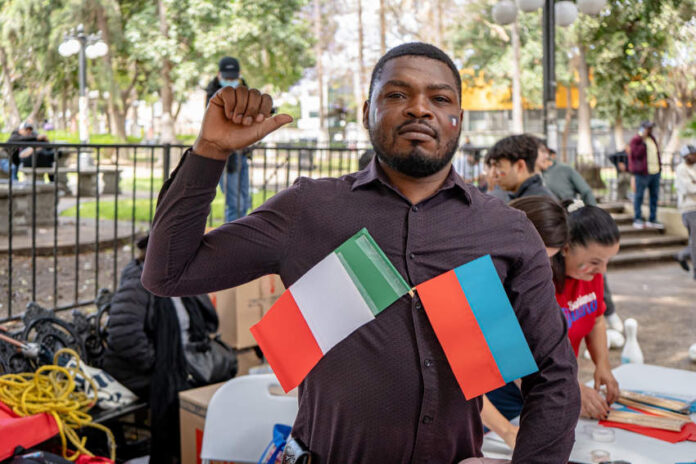As a U.S. citizen who lives in Mexico part of the year, I pay close attention to the presidents of both countries and their perspectives on immigration issues and border policy. And I’m particularly interested in immigration because I grew up abroad, in a diplomatic family, surrounded by people different from myself.
After President Donald Trump was inaugurated in January, he declared a border emergency in order to prevent anyone from entering the United States illegally. There is no way of knowing exactly how many people would have crossed the border if it had remained open, but according to the Public Broadcasting Service (PBS), U.S. Border Patrol previously encountered unauthorized migrants attempting to cross it thousands of times a day.

I know plenty of people in the U.S. who are fiercely anti-immigration and want a strong U.S. border policy. As an acquaintance said on Facebook in February 2024, “We need a border to keep out all those terrorists from Mexico.”
I suppose we need a border policy, though it’s hard for me to see exactly why. Who crosses our borders? On the northern border, Canadians like their country and have no desire to relocate to the U.S., except those who move to the Sunbelt as part-time snowbirds.
As for the southern border, many of the people who want to cross it are hardworking Latinos willing to do low-paid, backbreaking labor, sometimes in over 100-degree temperatures. They’re well-known culturally for loving their families, being deeply religious, and respecting authority. They want to become legal.
But there’s no way they can complete the laborious paperwork necessary to get even a temporary visa while in their own countries before either starving — due to food shortages and hunger in Venezuela — or being shot or kidnapped by gangs — in El Salvador, Nicaragua, and Honduras.
I’d love those Americans who rage at the idea of foreigners “stealing” our jobs to feel what it’s like to pick strawberries for a season. I know I don’t want to do that, and I bet they don’t either. But picking strawberries for a couple of months just might change their vote.
Research from the nonprofit organization Women for Women International shows that most people forced to flee their country for political or economic reasons would much prefer to stay in their own country if it were safe and economically viable. The common U.S. fantasy that immigrants want what we have is not only misguided but arrogant.

Sure, people want the freedoms and the salaries available to Americans, but they don’t want the mass shootings, homelessness, fentanyl addiction, racism or any of the other ills that afflict American society. Like most U.S. citizens do — but, tragically, not enough of our legislators — they simply want the chance to earn a living and enjoy a peaceful life.
Ironically, six months after Trump closed the border, a Gallup poll showed that Americans’ views of immigration have swung dramatically upward in the last year. Seventy-nine percent of American adults now think immigration is good for the country, and the number of Americans who want immigration reduced dropped from 55 to 30 percent since 2024. These shifts reverse a four-year trend of growing concern that the U.S. was admitting far too many migrants.
Meanwhile, Mexico — a Catholic country famous for its machismo — recently elected a Jewish woman as its president, something the U.S. has yet to achieve on either count. But more importantly, she is everything Trump is not: measured, rational, and analytic. A former climate scientist, Sheinbaum’s statesmanship and calm rhetoric remind me of Germany’s former chancellor, Angela Merkel.
According to the United Nations Refugee Agency (UNHCR), if refugees in Mexico are afraid of returning to their country, they can apply for protection. The process is free and confidential. Mexico also provides options for those seeking asylum or facing humanitarian crises, with permits granted for victims of crime, unaccompanied minors, or those with pending asylum claims.
Mexico was lauded in March for its dignified treatment of refugees, with the United Nations describing a joint Mexico-U.N. resettlement program as “an example of assimilation and solidarity” toward emigrants.
The U.S. also has a tradition of providing refuge to those fleeing persecution, war and violence. The U.S. Refugee Act of 1980 created a process for admitting and resettling refugees, including setting annual ceilings and providing pathways for resettlement both from abroad and asylum claims within the U.S.
However, the law doesn’t guarantee a specific number of refugees that will be admitted, and the Trump administration has drastically reduced admissions.
Clearly, Mexico cares about refugees. Its policies aren’t perfect. How could they be, with the country wedged tightly between certain dangerous Central American countries and the aggressive U.S.? But Mexico’s current policies are a lot more humanitarian than ours.
Without the agricultural labor that refugees provide in the U.S., Americans will have less selection in foods and will experience higher prices. As citizen frustration intensifies, my hope is that enough of us in the U.S. will wake up in time to change our national direction. ¡Ojala! Maybe then we’ll allow more refugees in, grateful that they are willing to do the hard, sweaty work that no one else wants to do.
For me, that time can’t come soon enough.
Louisa Rogers and her husband Barry Evans divide their lives between Guanajuato and Eureka, on California’s North Coast. Louisa writes articles and essays about expat life, Mexico, travel, physical and psychological health, retirement and spirituality. Her recent articles are available on her website, authory.com/LouisaRogers
